While pondering my next batch of hard cider, I thought about an ongoing discussion. Should fruit, berries or any other flavor addition be added to cider must before pitching yeast or after initial fermentation has neared completion?
The question comes from the idea that flavor and/or aroma will be lost if fruit, berries or other flavorings are added pre-fermentation because initial fermentation can be aggressive. Therefore, the fruit, berries or whatever flavor addition desired, should be added once initial fermentation has begun to slow or has stopped completely.
I have read many posts where people have made a new blueberry or peach cider only to be disappointed with the lack of fruit flavor in the final product. Typically, someone will quickly comment that the fruit should be added in secondary which seems to be a generally accepted technique. Even I suggest it, although I have never done a side by side comparison.
So, I decided that I would try a cider experiment!
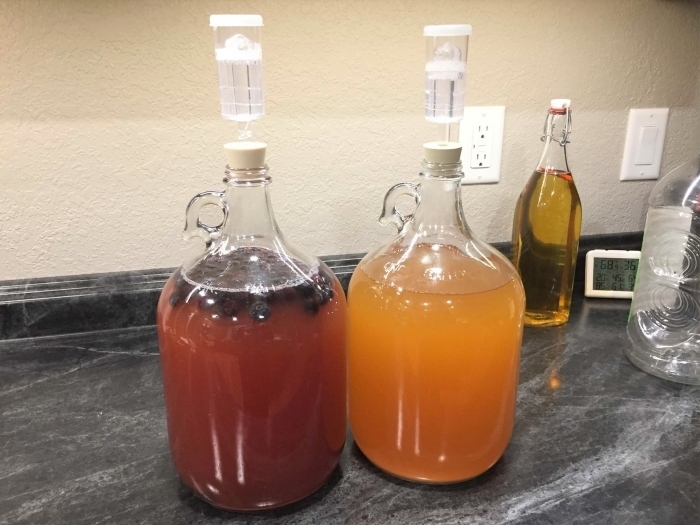
When Should Fruit Be Added to Cider?
The goal was to take a closer look at how flavors are affected by fermentation and whether fruit additions should be made before fermentation or after initial fermentation when making hard cider. Or, if it even matters at all.
The Setup:
To do this experiment, I prepared two, one gallon batches of cider using the same apple juice with a 1/2tsp yeast nutrient and a 1/4 packet of Nottingham Ale Yeast in each.
One fermenter received 2 cups of frozen blueberries while the other remained plain. After fermentation slowed, nearly two weeks, I added blueberries to the plain cider and let them both age for a few weeks.
Once I was confident that all of the sugars in the berries had been consumed, I racked both of the batches into clean and sanitized fermenters. At this stage, I wanted to make sure all of the sediment settled before I moved on to bottling.
About one month later, I cold crashed and bottled both batches of cider making sure to label each bottle so they didn’t get mixed up.
I also had to take a quick taste to see if anything incredible was happening!
Did Blueberries Add Additional Flavor to the Cider?
My first reaction to the two ciders was that they are almost identical. There were only very slight differences between the two but nothing big enough to say one was better or worse.
Overall, I knew that it wasn’t straight apple cider, but I’m not sure I would have been able to pick out the blueberries.
I thought more time aging was needed. Afterall, time generally makes cider taste better.
Six months later, I have finally finished another tasting and can confidently write that I don’t think there was much of a difference in taste, but there was slightly more aroma in the post-fermentation batch.
If there was any difference in flavor, I would say that the pre-fermentation batch was slightly more tannic which I can only attribute to the whole blueberries being in the fermenter for two weeks longer. I guess that was a flaw in my experiment…
As for the color, I couldn’t see a difference at all. Both did not hold the blue color they acquired in the fermenter but they did clear very well.
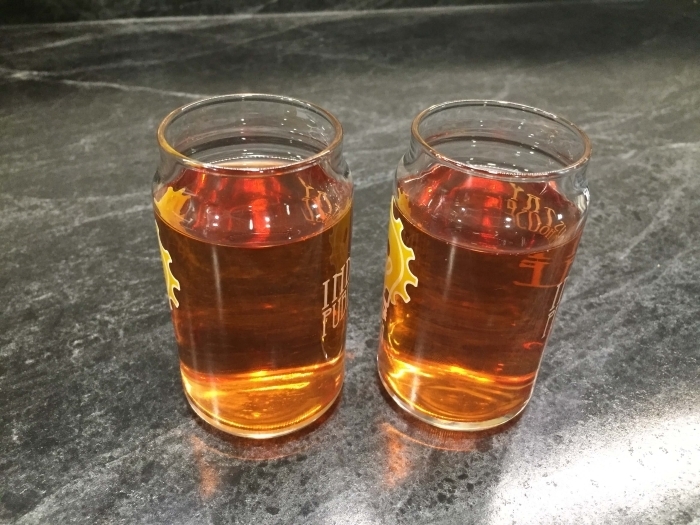
When Should Flavor Additions Be Added To Hard Cider?
Overall, I personally like to add fruit, berries, or any other flavor addition after initial fermentation is complete.
This experiment made me look at the process a little differently than I expected though.
Since I don’t always know how long initial fermentation will take, adding fruits or berries later will allow me to control the time that they are in the process. I believe the tannic properties in the pre-fermentation batch came from the extended exposure to the berries so that maybe my next experiment.
I also think this should be tried with other yeast and fruit additions as they will all change this experiment in their own way.
Do you have any thoughts? Please leave a comment below!
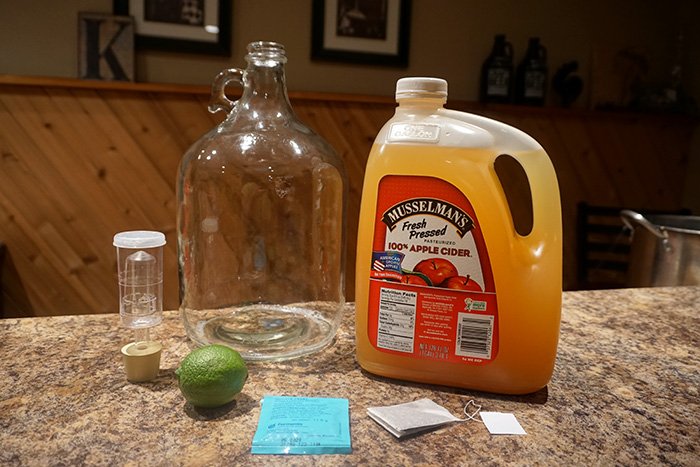
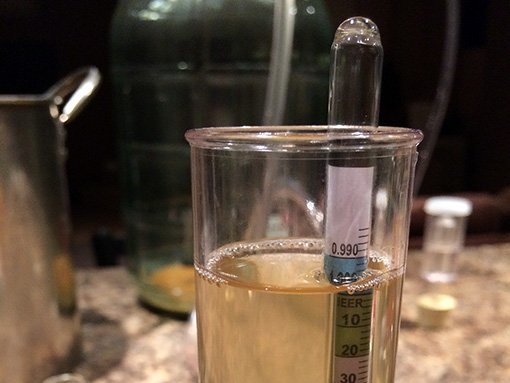
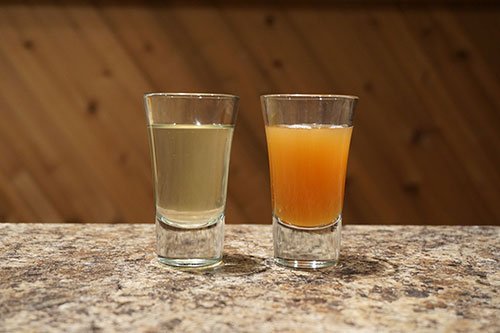

Thanks, I appreciate your information.
Yes, thanks for the info. It’s nice to get actual trial results as well as wisdom/opinion handed down from previous generations.
I also have tried both methods, only to find the post fermentations would always have more aroma but generally little more. I noticed that aroma is short lived also. Mostly unnoticeable by the end of the first week after kegging. I suspect that since Co2 isn’t necessarily all that inert, it may oxidize to some extent.
What are your thoughts on adding berries to the bottle when you bottle it?
My first thought with that is if there’s carbonation in the bottle that you add fruit too it’s going to add all sorts of nucleation points for the co2 and may result if a fizzy mess when opened
Curious here: What about just adding blueberry JUICE at bottling, measuring the amount of sugar in the juice to account for the priming calculation? Would love to hear if you’ve tried this.
Hi John,
I do add many different 100% juices to my batches before fermentaion. Best results are achieved with a simple ratio of 4-1 and this maintains the wonderful colours of the added fruit through bottling. I have used prune, cherry, blueberry and cranberry juices and this is my personal order of preference, yes I think prune was the best overall even with its muddy brown colour.
We make black raspberry syrup for ice cream and pancakes. This year I added 2 pints to a 5 gallon carboy pre-fermentation.
Beautiful color and wonderful raspberry flavor to the cider.
That sounds amazing.
What did you use to make the syrup? I was thinking about doing something similar with strawberry.
Would you share what you used to make your black raspberry syrup?
2 Cups of blueberries seems light for such a subtle fruit. Had you gotten results prior to this with only 2 Cups per gallon?
Have you considered doing a designed experiment, also known as a DOE or DOX? This version of an experiment that you did is simply a 1-factor experiment, where you didn’t base the flavor against a control, like a straight cider.
There’s so much more work to be done here!
i have good experience with mead making, but am a newbie to cider. In mead making, if fruit isn’t present in the initial ferment, it is technically just a ‘flavored mead’ if only added in secondary, and can’t really be called a ‘cyser,’ ‘ melomel,’ etc. (at least, in the eyes of competition.
Even though many people seem to prefer to add their flavorings in secondary, does the cider community have similar rules? (at least when it comes to competition?)
I’ve just completed two batches of pear cider. I’ve brewed beer for years but this was tough. I used Keifer pears from a 60+year old tree for the first batch. I added 1# of wild Bartlett pears as that’s all I could initially find. The pears yielded very little juice. I used 80# for 5 gallons and used Omega Kveik Espe yeast at 90°.
Fermentation was initially ferocious but stalled at 1.010
I split the batch, racked into 5 gallon carboys. I added more nutrient (Carlson) and more Pectic enzyme. I added 50oz each of Langer’s Apple Cider (split one whole)
bottle.
I left one just like that but on the second, I added 1# of Mulberries from a very old tree. Mulberries were frozen then pressed directly into the cider through a sieve with a large spoon.
I was not expecting any berry flavor whatsoever. I only wanted a nice color and that’s what it did. 1# of Mulberries gives a very nice magenta color.